3. Circular Open Source Fashion¶
Lamp made out of kombucha (bacterial celulose)- a call for the bacterial world. They’re inside us, outside, everywhere. Actually, if we compare the amount of human genes and bacterias in our bodies, we realize that we’re more bacteria then humans. 60% of us is bacteria. The bacterias are the ones who mostly changed the world we know.
Interesting articles and concepts: - Holobionts - Toward a bacterial turn in art architecture and design - The Holobiont Blindspot
The initial idea was to challenge myself to try to use the maximum of the sheet/fabric space and build 3d shapes with it. The circles/connic shapes are inspired in the lichens fruiting bodies and represents the necessity of connecting and building new bodies with our earthly companions.
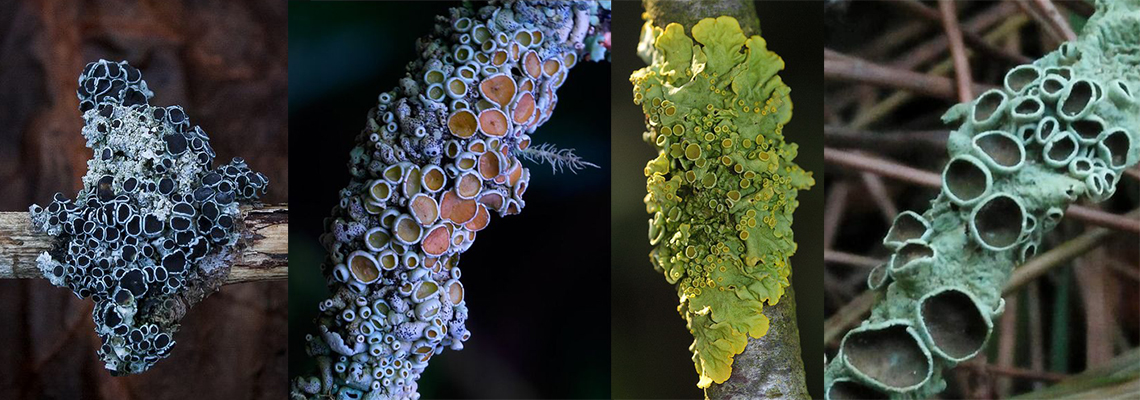 Liquens and their multiespieces way of life. Pictures by: M Fortune, Henk Wallaways
Liquens and their multiespieces way of life. Pictures by: M Fortune, Henk Wallaways
 Sculpture by Danielle Wood,Shadow pavilion by PLY Architecture, Styrene lamp by Paul Cocksedge
Sculpture by Danielle Wood,Shadow pavilion by PLY Architecture, Styrene lamp by Paul Cocksedge
If you want, you can check some other images and references from my pinterest page
Process and workflow¶
To start testing with modular pieces, I decided to experiment with transforming 2d drawings in 3d shapes. I had in mind this 2 main challenges: make a 3d piece from a 2d surface and use as much of the sheet as possible (as little leftovers as possible).
 studying and testing with paper and 3d shapes
studying and testing with paper and 3d shapes
Once I decided to go for the conic shapes, I started testing how would they fit the best, like a puzzle, how they could connect with one another and if the material I had in mind (Bacterial celulose) could work. Even if it was a 2d shape, I decided to use Rhinoceros because I was already getting used to it, and I just had to use simple curves, lines, and commands like "trim".
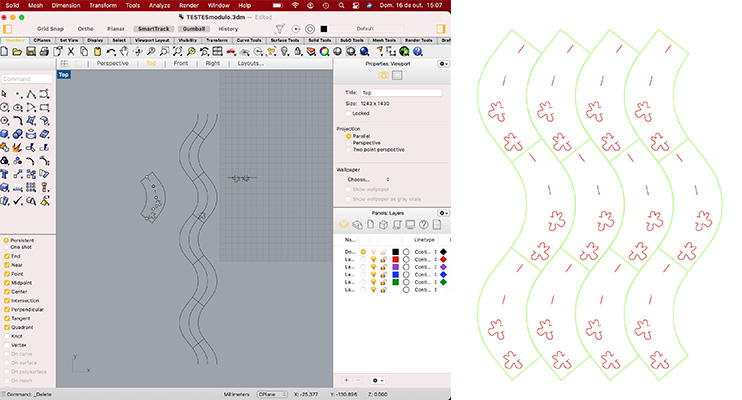 studiyng and drawing in Rhino
studiyng and drawing in Rhino
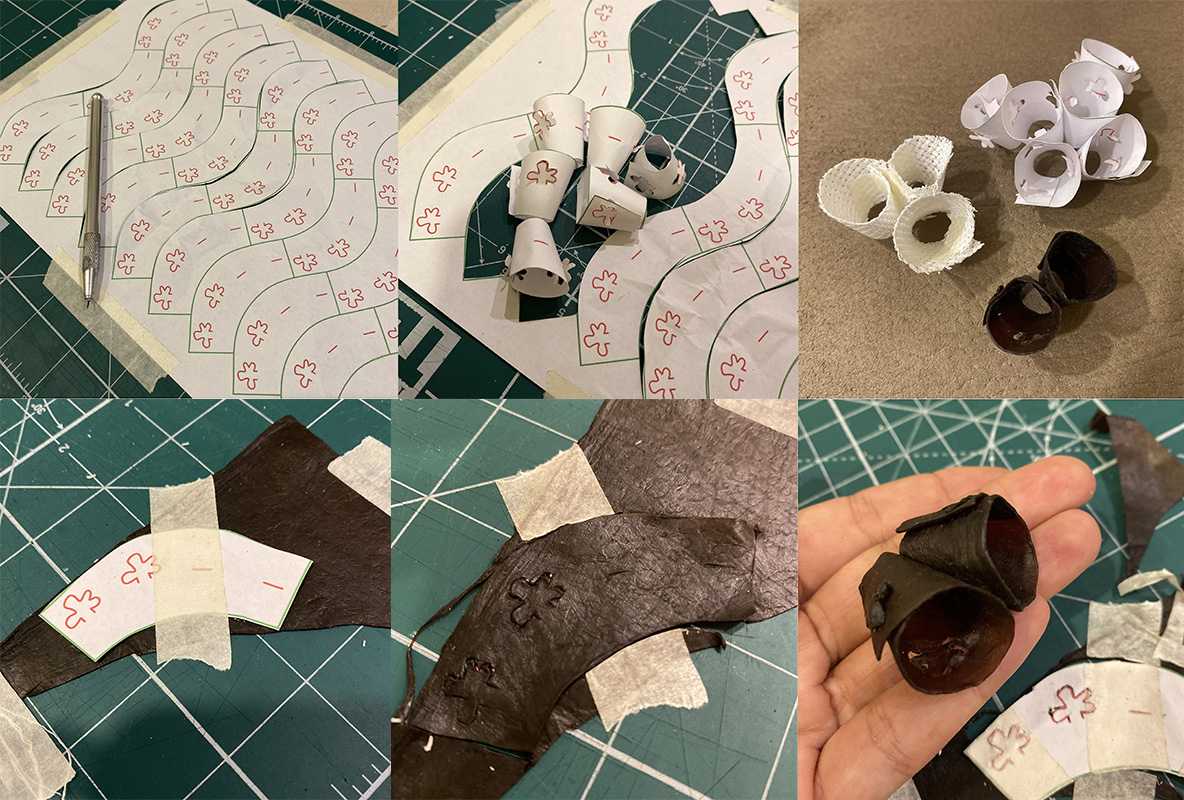 studying and testing
studying and testing
 Testing the laser cutter for best speed and power
Testing the laser cutter for best speed and power
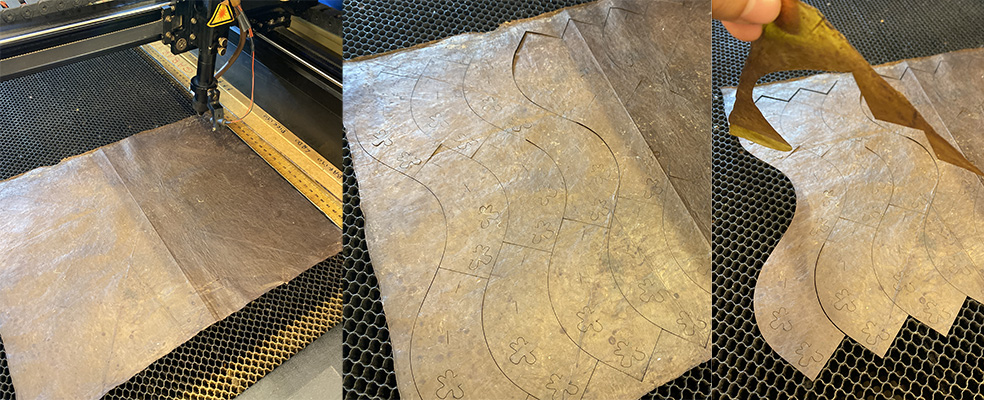 Laser cutting in a bacterial celulose sheet with 40 speed and 10 power
Laser cutting in a bacterial celulose sheet with 40 speed and 10 power
 Laser cutting in a circular bacterial celulose sheet
Laser cutting in a circular bacterial celulose sheet
 Step by step for assembling the modules
Step by step for assembling the modules
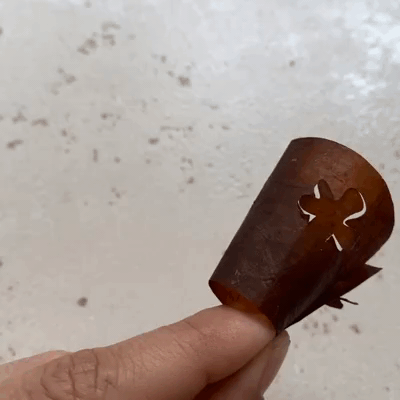
 Assemblage - half sphere and tests with light
Assemblage - half sphere and tests with light
For the entire circle, +- 60 pieces-modules would be needed. I had 2 Kombucha sheets. The bigger one had more or less 30x40cm, was 0,3mm thick and very soft. I could cut 27 pieces on this one. The other one was round and a bit harder and brittle, It had +-35cm of diameter and yielded 17 pieces.
Reflexions & conclusions¶
I really liked to think about the possibilities of 3d shaping from a planar surfaces. The bacterial celulose worked really well with the laser cutting. Unfortunately for using the kombucha as a leather, paper, textile, we have to kill it in the process. This is something that I’m also interested in working with, understanding better this ethics of working with living beings and our and their limitations. Is there a way of not killing it and using it? Or what is this killing? If the kombucha scoby and the same combination of bacterias and yeast are still alive and growing in another place if we just take part of it to dry and use and leave other parts growing it is just as taking an arm that will grow back again? Or is it just an argument for making us biodesigners feel better?
Fabrication files¶
File: 1 Module File: Laser cut sheets
Link to the project in open source circular fashion website